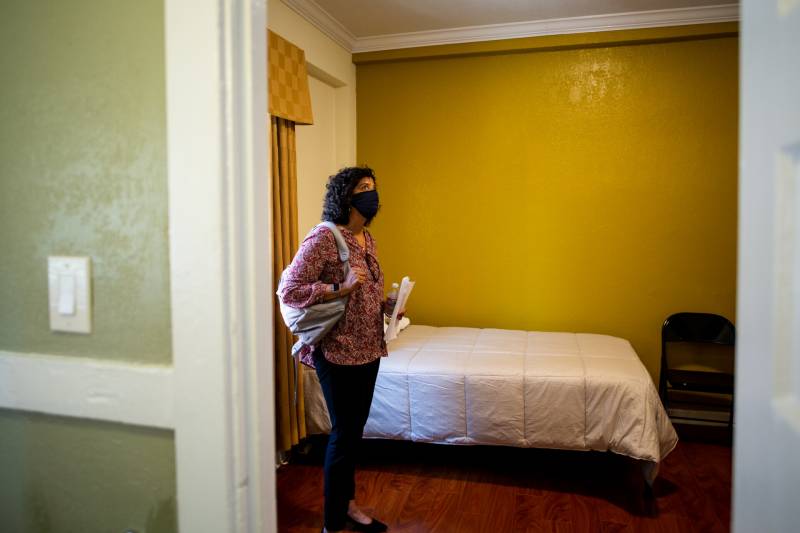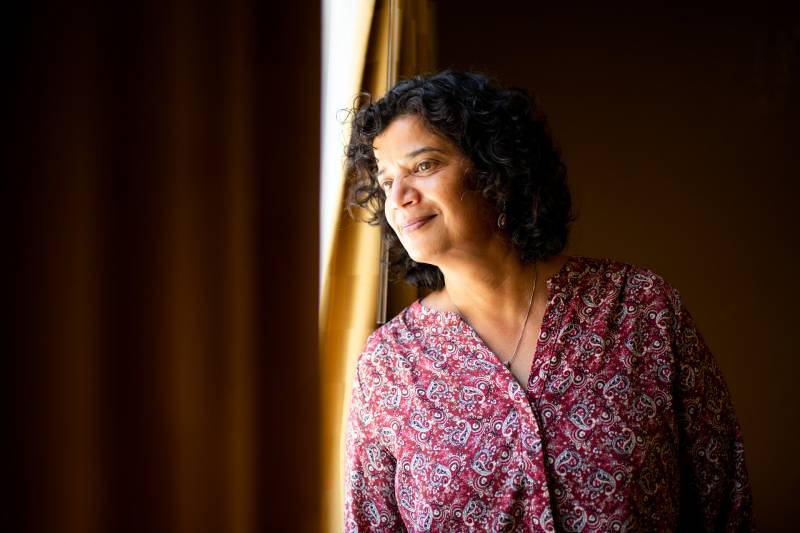It's exciting for various reasons. One of them is there's such an equity piece to homelessness. We know that close to 40% of the people who are homeless are African American. And the city has a history of not doing well by the African American population, a horrible history. It's part of making sure that people who've been displaced in San Francisco actually have a home to go to.
It's a chance for us to think about ways that we serve our residents better across the city. So, we're not only thinking about having supportive housing in this area, we're thinking about how we do this across the city so that there's a geographical equity piece to that.
To me, it's just really exciting to come into the department at this time when we have an unprecedented amount of resources. We're also building up the department, so that we will really be able to respond to the needs of people, get our contracts out the door quicker and things like that.
There's just a lot happening at once. There's a confluence of federal, state and local resources that are finally coming together in a way that makes sense and that really will help us make a much larger dent in this issue than we've been able to do in the past.
Department Priorities
There’s a lot that needs to get done. What are your priorities for the department?
We have a really good framework at this department. We have really good interventions, whether it's problem solving and prevention or it's housing people and all the other things that we do.
But I think we still have a lot of gaps even within those buckets. Trying to tease out what those are and figuring out how do we create a better system for people to enter? Can we make things quicker?
We can look at certain populations and see if we can do a better job. Again, equity is a huge thing and it's a huge thing for us to tackle because we have such an inequity in the city.
One of the big things for this department is that it's new. It was formed in 2016 by bringing together staff from a couple of different departments. It's been under-resourced, and we're in the process now of really building up our capacity and building up our staffing.
That's important because with all this money, we have to be able to be the engine that gets it out the door, ultimately to get people housed. And we're challenged by that right now because we're in building mode. So doing that as quickly as possible is really important, and that's a high priority for us.
Staffing Up to Distribute Proposition C Funds
With all this new money — distributing around $1 billion in Prop. C funds over the next few years, new state and federal money — it’s all coming together. But without the capacity to get the money out the door, then it just sits in the bank. You brought on two new positions to your leadership team: Noelle Simmons, the former deputy director at the [San Francisco] Human Services Agency, and Cynthia Nagendra, the former executive director at the [UCSF] Benioff Homelessness and Housing Initiative. Can you tell me a little bit about what else is going on with the staffing and how the department is trying to build itself up so it is really positioned to get the money out the door quickly?
Really, it's hiring right now. Our team is working fast and furiously to hire all of these positions that we have. We have new positions in our budget. Right now, I think we have about 130 staff and we've got something like 80 positions that we will be hiring for, which is a ton when you think about the size of the department. And so we're doing that as quickly as we can.
At this point, Emily Cohen, a spokesperson for the department, chimed in to add that the department’s budget is growing by 62%.
Emily Cohen: In terms of operationalizing that, tracking it, accountability, ensuring we have due diligence and public process to get it out the door, we want to have the highest level of integrity in everything we do. It turns out that takes capacity.
Shireen McSpadden: The other thing is we want to be able to communicate our success. We want to be able to show that we're moving the needle. We hear a lot of frustration in the community about what's not being done. We want to be able to show what we are doing and how many people really have been housed. So we're going to be working on that. Certainly we track information, and we have data but we continuously want to improve that process. We also want to think about how we communicate to the public.
Bridging the Equity Gap
You talked a little bit earlier about gap in equity. I'm just wondering, could you give me an example of some things where there might be gaps, or disconnects, that you're looking to bridge?
We are challenged a little bit by our process in being able to reach specific populations. And I'll give one example, and that's because I came from the Department of Disability and Aging. One example is older people. I have known older people who don't rise to the top in terms of priority, but they're clearly 80 and homeless. So that's just one example of how I think we need to tweak our system a little bit to figure out how we can change that.


